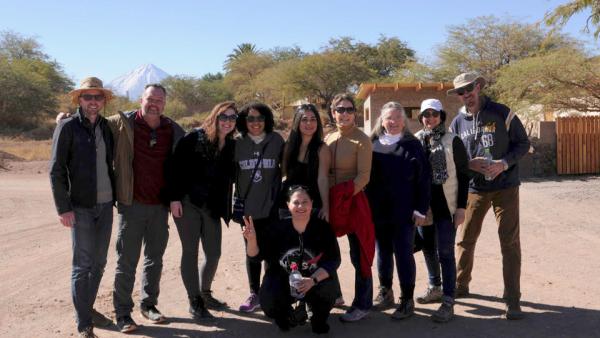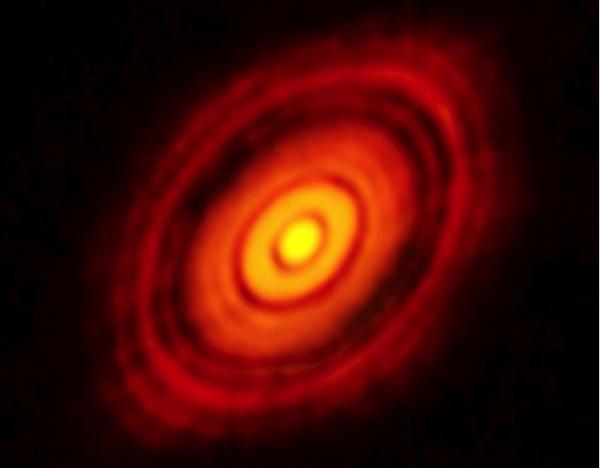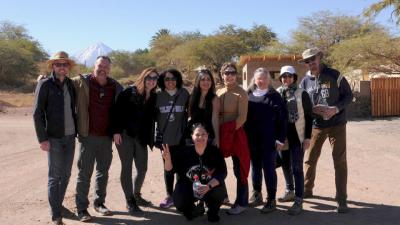The Chilean Perspective
 I went to Chile with the Astronomy in Chile Educator Ambassador Program. I share here my experience and the perspectives of others in my 2018 ACEAP cohort:
I went to Chile with the Astronomy in Chile Educator Ambassador Program. I share here my experience and the perspectives of others in my 2018 ACEAP cohort:
John Goar: I was captivated and thrilled. I was a northerner seeing the southern skies for the first time. If you have ever had the opportunity to see the southern hemisphere sky, then you might have shared my experience. That night at Cerro Tololo in Chile, all at once, I got to see all the sky territory that, for me, was unknown — alien. With a sky full of new constellations, I used naked eyes and binoculars to explore. I knew beforehand that it would be overwhelming, but I also knew it would be amazing. The Magellanic Clouds, 47 Tucanae and Omega Centauri, Centaurus A, the holy Southern Cross — and the gems kept coming. So beautiful are the far reaches of the Milky Way!
I went to Chile with the Astronomy in Chile Educator Ambassador Program. I share here my experience and the perspectives of others in my 2018 ACEAP cohort:
John Goar: I was captivated and thrilled. I was a northerner seeing the southern skies for the first time. If you have ever had the opportunity to see the southern hemisphere sky, then you might have shared my experience. That night at Cerro Tololo in Chile, all at once, I got to see all the sky territory that, for me, was unknown — alien. With a sky full of new constellations, I used naked eyes and binoculars to explore. I knew beforehand that it would be overwhelming, but I also knew it would be amazing. The Magellanic Clouds, 47 Tucanae and Omega Centauri, Centaurus A, the holy Southern Cross — and the gems kept coming. So beautiful are the far reaches of the Milky Way!
My experience underscores the most inescapable reason that American science efforts invest in research telescopes in Chile – to achieve full sky coverage. While on the ACEAP expedition, I met research scientists and Chilean officials and I came to appreciate the importance of the mutually beneficial relationship that has been fostered between the United States and Chile. If one considers the history of recent astronomical breakthroughs, it is clear how much we have benefited by our Chilean facilities.
I am a teacher and I love teaching astronomy the most. I enjoy the story of how our understanding of the cosmos developed swiftly starting with Galileo in 1609. History shows that the step-by-step improvements in telescope technology has allowed for the development of our understanding of the cosmos. I think that most astronomers would agree that the wealth of knowledge that we have today makes our investments in technology worthwhile. And the story continues with new telescopes, including the Large Synaptic Survey Telescope (LSST). I look forward to getting my hands on the publicly available data from the LSST and using it with my students in the classroom. As Tim Spuck, education officer of Associated Universities, Inc. explains: “Chile is rapidly becoming the astronomical capital of the world, providing a window to the Universe and making discoveries that benefit all of mankind.”

The 2018 ACEAP cohort: Dr. Stephen Case, Kyle Jeter, Tiffany Stone Wolbrecht, Moiya McTier, Yasmin Catricheo, Dr. Nicolle Zellner, Eileen Grzbowski, Shari Lifson, John Goar, front: Samara Nagle. (Ed Ting (ACEAP/NSF))
This bond is shared among other ACEAP cohorts and facilitates a fundamental purpose of the ACEAP program—to spread the word about Chilean astronomy. This requirement of the program is easy. Chile is a beautiful country rich in culture and geologic wonders whose unique geography provides the clear, dry weather and high elevations ideal for ground-based observatories.
Since the 1960s, Chile has been home to a growing astronomy infrastructure that today sits on the forefront of scientific discovery. In the next decade, 70 percent of the world’s astronomical observing capacity will be in Chile. Clearly, Chile is a key player in the global pursuit of astronomy.
Atacama Large Millimeter-submillimeter Array (ALMA)
Dr. Stephen Case: I was interested in learning about the people and the science behind the huge telescopes that bring us knowledge of, for instance, young planets forming around distant stars. And in this respect, the ACEAP trip helped transform my own understanding of the stories of these instruments. Take ALMA for instance, the Atacama Large Millimeter-submillimeter Array. ALMA is the world’s most advanced radio telescope, a cluster of 66 radio antennas located on the Chajnantor Plateau about 5,050 meters (16,500 feet) above the Atacama Desert. We’ve all probably seen the incredible images of proto-planetary disks from ALMA, showing concentric ring structures indicating young planets carving paths through dust. (The European Southern Observatory’s Very Large Telescope—also in Chile—has recently gone even further, taking the first direct image of a forming planet around a young star.)

HL Tauri (ALMA)
But the intersection of astronomy with STEM, and in particular new disciplines such as data processing and archiving, is going to take a quantum leap forward with another major observatory currently under construction in Chile: the Large Synoptic Survey Telescope. Unfortunately, severe weather made it impossible for us to visit the LSST construction site on the summit of Cerro Pachon (though we were able to view it from afar on the neighboring Cerro Tololo). While we didn’t visit LSST, we met with the educational outreach coordinator for the project in Chile and learned quite a bit about the science behind the instrument. I don’t think it’s too much of an exaggeration to say that the LSST, when it sees first light in 2020, will transform observational astronomy and create entirely new related disciplines.
Dr. Nicolle Zellner and Samara Nagle: We are honored to have been selected as ACEAP ambassadors this year, and we believe that all of us left a piece of our hearts in Chile. It’s a wonderful country with a rich culture, delicious cuisine, and friendly locals. Not to mention those skies… With just a little bit of practice, we took some amazing pictures and have wonderful memories—and new friendships.
Note: ACEAP is seeking renewal of funding from the National Science Foundation and anticipates funding will continue. ACEAP plans to accept applications for 2019 soon! Astronomy educators are encouraged to visit the ACEAP website for information on the application process.
http://epe.aui.edu/programs/astronomy-in-chile-educator-ambassadors-program/
Blanco Telescope, Cerro Tololo (J. Goar)




